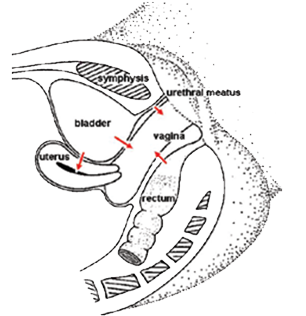Obstetric Fistulae and Unsafe Abortions
May 23 is the International Day to end Obstetric Fistulae. Today’s post deals with the relationship between Unsafe Abortions and Obstetric Fistulae.
What is an Obstetric Fistula?
Obstetric fistula is a severe medical condition whereby a “fistula” or a hole develops either between the rectum and vagina (called rectovaginal fistula), or between the bladder and vagina (called vesicovaginal fistula) after severe or failed childbirth, unsafe abortions, or when adequate medical care is not available.

The bladder and the rectum are in close contact with the front and back of the vagina respectively and any injury to the vagina can lead to a false passage developing between these.
Obstetric fistulae most often occur because of the following factors:
- Woman is in labour for more than 24 hours without delivering
- Sexual violence
- Unsafe Abortions
When unsafe surgical methods are used in performing abortions there is a possibility of the infliction of injuries that can create fistulae. The effects of such fistulae are manifold: incontinence, odours due to incontinence, infection, tremendous pain – and the stigma that comes with it, for women may be leaking faeces and urine which tends to make people keep away.
Obstetric fistulae are preventable and treatable. For the most part of the developed world, obstetric fistulae have been eliminated: and for an obvious reason – the access to emergency obstetric care and sexual and reproductive health services. But in the developing world, these very services are elusive, although the cure itself is not. Fistulae can continue to remain a dangerous threat to women if there is no access to safe and affordable abortions.






